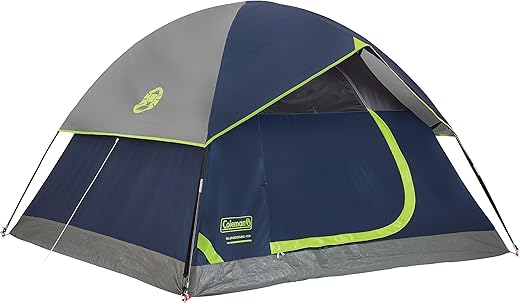
Hey there, fellow adventurers! 



What is a Freestanding Tent?
When you’ve finally decided to embrace your inner adventurer and spend a night under the stars, one critical piece of equipment you’ll need is a tent. But not just any tent—enter the freestanding tent! Forget about wrangling with stakes, struggling against the wind, and debating whether or not you have the right spot to pitch your tent. A freestanding tent lets you pop it up and chill anywhere. Let’s dive in and unpack all the glamping goodness that comes with this choice!
What Makes a Freestanding Tent?
So, what exactly is a freestanding tent? As the name implies, this type of tent stands on its own—no stakes required! It relies on its sturdy poles and smart design to hold its shape. Here are some key features that define a freestanding tent:
- Self-Supporting Structure: The frame of a freestanding tent usually consists of an interconnected system of poles that creates a robust structure. This allows you to move the tent around as needed before settling in, perfect for when you find that dreamy camping spot next to a bubbling brook (or the very specific position where there are no bugs).
- Versatile Setup: The setup typically involves inserting poles through sleeves or clips on the tent body. In most cases, it can be pitched in just a few minutes by one person (no team required!).
- Material Matters: Freestanding tents are often made from lightweight, durable materials such as nylon or polyester. The tent body is usually coated with a waterproof layer, protecting you from unexpected downpours while you’re busy contemplating life’s mysteries (like why none of your socks match).
Ideal Camping Scenarios
Freestanding tents shine in various camping situations. Here are a few occasions when you’ll want to pack one for your next escapade:
- Backpacking Trips: Lightweight freestanding tents like the REI Co-op Quarter Dome SL 2+ are perfect for those who want to enjoy the great outdoors without sacrificing comfort. Weighing in at just around 3 pounds, it’s easy to carry and quick to set up after a long day on the trail.
- Family Camping: For families or group camping, the Big Agnes Copper Spur HV UL3 is a spacious option that fits three people comfortably. It features a high peak for standing, lots of pockets for snacks and gadgets, and ample ventilation to keep you cool. Plus, it sets up in minutes, leaving you more time for s’mores and campfire karaoke!
- Festival Camping: Arriving at your favorite music festival and finding the perfect spot can be a race against time. A freestanding tent like the Nemo Hornet 2P lets you set up quickly and adapt to the crowd around you. Plus, its lightweight nature means you won’t feel like you’re lugging around a small car.
Setup Process: Simple as Pie!
Setting up a freestanding tent is as easy as pie—especially if you can resist the temptation to eat that pie until after you’ve pitched the tent. Here’s a quick rundown of the process:
- Lay Out the Footprint: Start by laying down the footprint or ground tarp if you have one—it’ll protect the bottom of your tent from those sneaky rocks.
- Assemble the Poles: Connect the tent poles according to the manufacturer’s instructions. This typically involves snapping or sliding the poles together.
- Insert the Poles: Insert the ends of the poles into the grommets or clips on the tent corners. This is where the magic happens, transforming a pile of fabric into your new cozy abode!
- Raise the Tent: Once the poles are in place, lift the tent, allowing it to take shape. Some models have an additional rainfly that goes over the top for extra rain protection.
- Secure It (If You Want): While freestanding tents don’t need stakes to stand, using a few pegs can provide additional stability, especially in windy conditions. Just consider them as chic accessories for your tent!
Materials You Can Count On
Freestanding tents come in various materials, and each has its own pros and cons. Here’s a breakdown:
| Material | Pros | Cons |
|---|---|---|
| Nylon | Lightweight, strong, and water-resistant | Can be prone to UV damage |
| Polyester | More durable against UV rays and water-resistant | Heavier than nylon |
| Rainfly Coating | Typically silicone or PU-coated polyester for waterproofing | Can add to overall weight |
Brands like MSR and Sierra Designs have built a reputation for manufacturing high-quality products that stand up to the elements, ensuring that you stay dry and comfy throughout your adventures.
So gear up, grab your freestanding tent, and get ready for a camping experience that’s as easy as throwing your bags in the car—only to realize you forgot the marshmallows. Don’t worry; you’ve got this!
What is a Non-Freestanding Tent?
When it comes to camping, tents are our trusty companions. They protect us from creepy crawlies, unexpected weather changes, and the occasional rogue raccoon that thinks it’s a gourmet restaurant! Among the various types of tents available, non-freestanding tents hold a special place. They might sound like the clumsy cousin of the family, but oh boy, do they pack some serious advantages! Let’s break it down.
Characteristics of Non-Freestanding Tents
So what makes a non-freestanding tent non-freestanding? You guessed it – it relies heavily on stakes and guylines to keep it standing upright, like a toddler getting their first bike without training wheels. These tents forego the rigid poles that many traditional tents boast, leading to their lightweight and packable nature. Instead of enjoying the luxury of a self-supporting structure, non-freestanding tents ask for your commitment through a bit of setup finesse.
Why Stakes and Guylines Matter
- Stability: Non-freestanding tents are anchored to the ground using stakes and guylines, which means they’re super stable in windy conditions. Just think of it as a really well-behaved kid holding onto a slide while their friends are flailing.
- Adaptability: If you find yourself camping in rocky or uneven terrain (hello, boulders), you’ll be grateful for the flexibility that stakes and guylines provide. You can position your tent however you like, adapting it based on the site.
- Lightweight: Non-freestanding tents are typically lighter than traditional tents, making them a popular choice among backpackers who want to keep their pack as light as possible. More snacks, less bulk!
Styles of Non-Freestanding Tents
When you dive into the world of non-freestanding tents, you’ll discover a few exciting styles, each with its own quirks and benefits. Let’s explore:
1. Tarps
Versatile and Lightweight
Tarps are the Swiss Army knives of the camping world. They can be pitched in a variety of configurations, giving you options galore! They are super versatile, whether you want to set them up as a traditional tent or as a makeshift dining area.
Example Products:
- Hyperlite Mountain Gear Dyneema Tarp: With extreme waterproof capabilities and ultralight construction, this tarp gives you the perfect base for survival in the wild without feeling like you’ve taken a lead ball and chained it to your back.
2. Traditional Non-Freestanding Tents
Great for Beginners and Experienced Campers Alike
These tents are similar to regular tents but come without rigid poles. They often go hand-in-hand with trekking poles or require companion stakes and guylines to set up.
Example Products:
- Big Agnes Fly Creek HV UL2: Weighing in at just over 2 pounds and offering ample space for two, this tent is a favorite among ultralight backpackers. Plus, it has a super easy setup that even your dog could handle (or at least it will look like they’re trying).
3. Bivy Sacks
Minimalist and Compact
Generally designed for solo adventurers, bivy sacks are minimal structures that are typically used for ultra-lightweight trips. They provide the basics – a protected sleeping area while keeping the weight down.
Example Products:
- Nemo Hornet 2P Bivy: This isn’t just any bivy sack; it’s a cozy cocoon that can fit anywhere! Perfect for those nights when you just want to roll over and go back to sleep after zipping yourself in.
Advantages of Non-Freestanding Tents
The benefits of non-freestanding tents are aplenty. Here’s a fun breakdown:
| Advantage | Description |
|---|---|
| Weight Savings | Typically lighter than traditional tents, allowing for extra snacks on your hike! |
| Versatility | Can adapt to various terrains and setups, whether that means using extra guylines or pitching as a tarp. |
| Compact Size | Packs down smaller than a hot dog at a baseball game, perfect for any backpack. |
| Fewer Poles = Fewer Parts | Less stuff to lose when you’re racing to set up before it’s dark and scary! |
| Cost-Effective | Generally more affordable than their freestanding counterparts. |
So, whether you’re a weekend warrior or a full-time outdoor nomad, non-freestanding tents may be the breath of fresh air you’ve been looking for. Get ready to shake things up on your next camping adventure and enjoy the great outdoors – just don’t forget to pack those stakes (and snacks)!
Choosing the Right Option for Your Needs
In conclusion, whether you’re a camping novice or a seasoned pro, choosing between a freestanding and a non-freestanding tent boils down to your adventure style and location. Freestanding tents offer the convenience of easy setup and portability (perfect for those last-minute camping trips or when you just want to impress your friends with your tent-pitching skills). On the other hand, non-freestanding tents can be lightweight and super compact—ideal if you’re hiking to a secluded spot and can survive a night with a little less space (and a healthy dose of patience). So, take a moment to assess your camping needs, think about your typical terrain, and choose the tent that’ll keep you cozy under the stars. Happy camping, and may your camping trips be filled with laughter, s’mores, and zero surprise rainstorms!




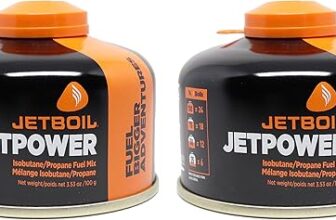
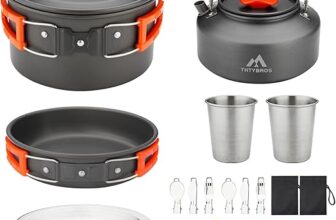
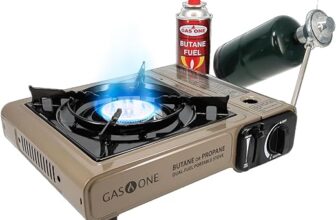
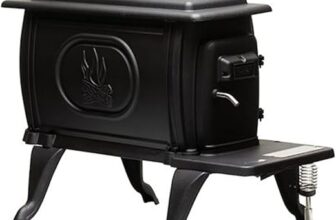

Totally get that! The Copper Spur is a great choice, but those gusts can be brutal. It helps to have some extra stakes and guylines for stability in windy conditions. Thanks for sharing your experience!
Can you provide more info on the durability of non-freestanding tents compared to freestanding options? I’m kinda worried about how they hold up over time.
Great question! Durability can vary, but many non-freestanding tents like the MSR Hubba NX are designed to be tough. I’ll definitely add more insights on this in the next update. Thanks for the suggestion!
I recently camped with a non-freestanding tent, the NEMO Hornet 2P, and it was such a game changer! Super lightweight, and I loved being close to nature. Anyone else had a similar experience?
That’s awesome! The Hornet is a fantastic choice for minimalists. It’s great to hear how it enhanced your camping experience. Keep sharing those stories!
Hey, can you explain more about the weight differences between freestanding and non-freestanding tents? I’m trying to pack light for a backpacking trip!
Absolutely! Generally, freestanding tents like the REI Co-op Quarter Dome SL are heavier due to their poles, while non-freestanding ones like the Sea to Summit Telos TR2 can be lighter since they rely on stakes. I’ll dive deeper into this in a future post!
I gotta say, I love my Big Agnes Copper Spur HV UL2, but setting it up in windy weather can be a total pain. Anyone else have that struggle?